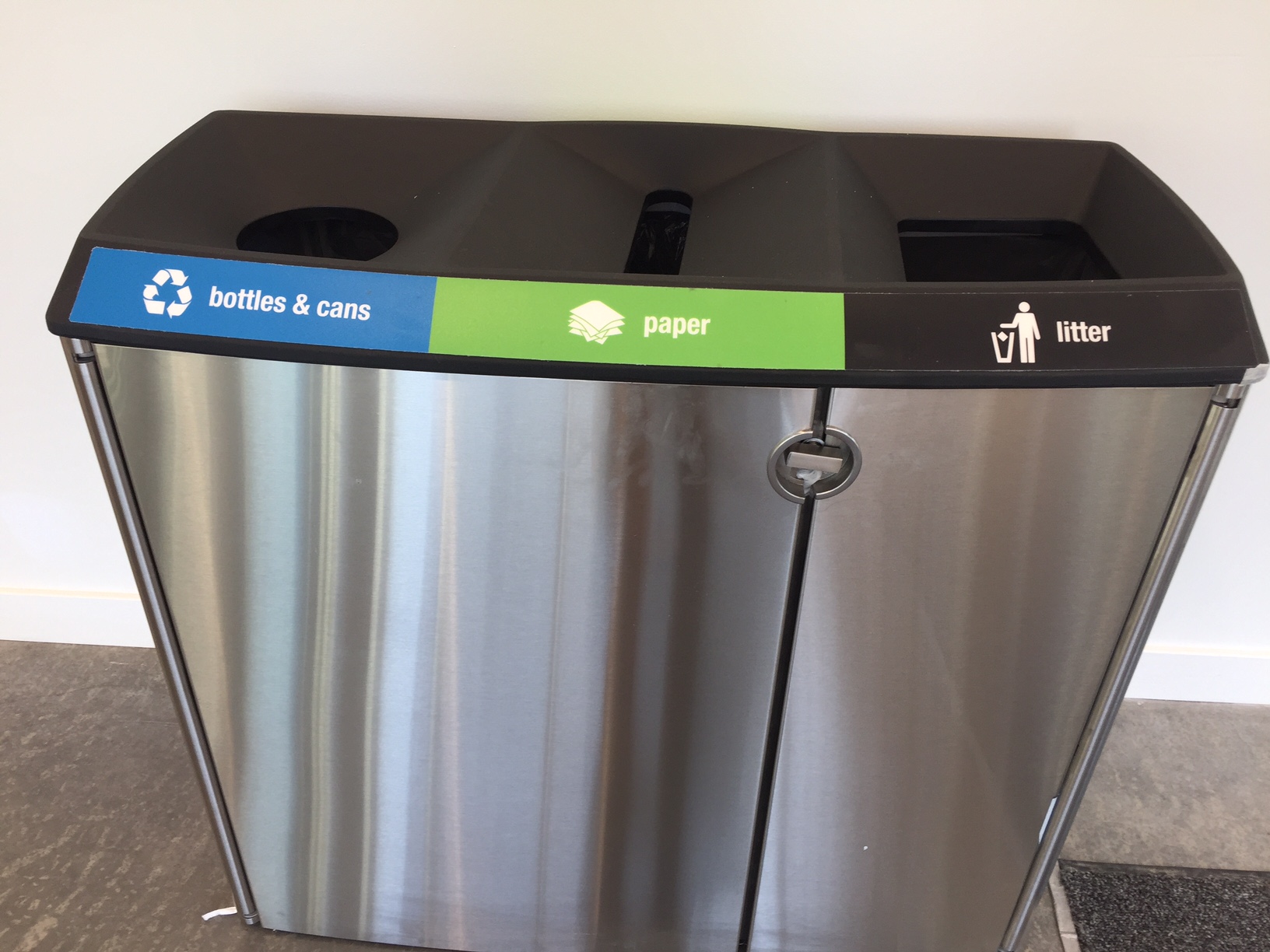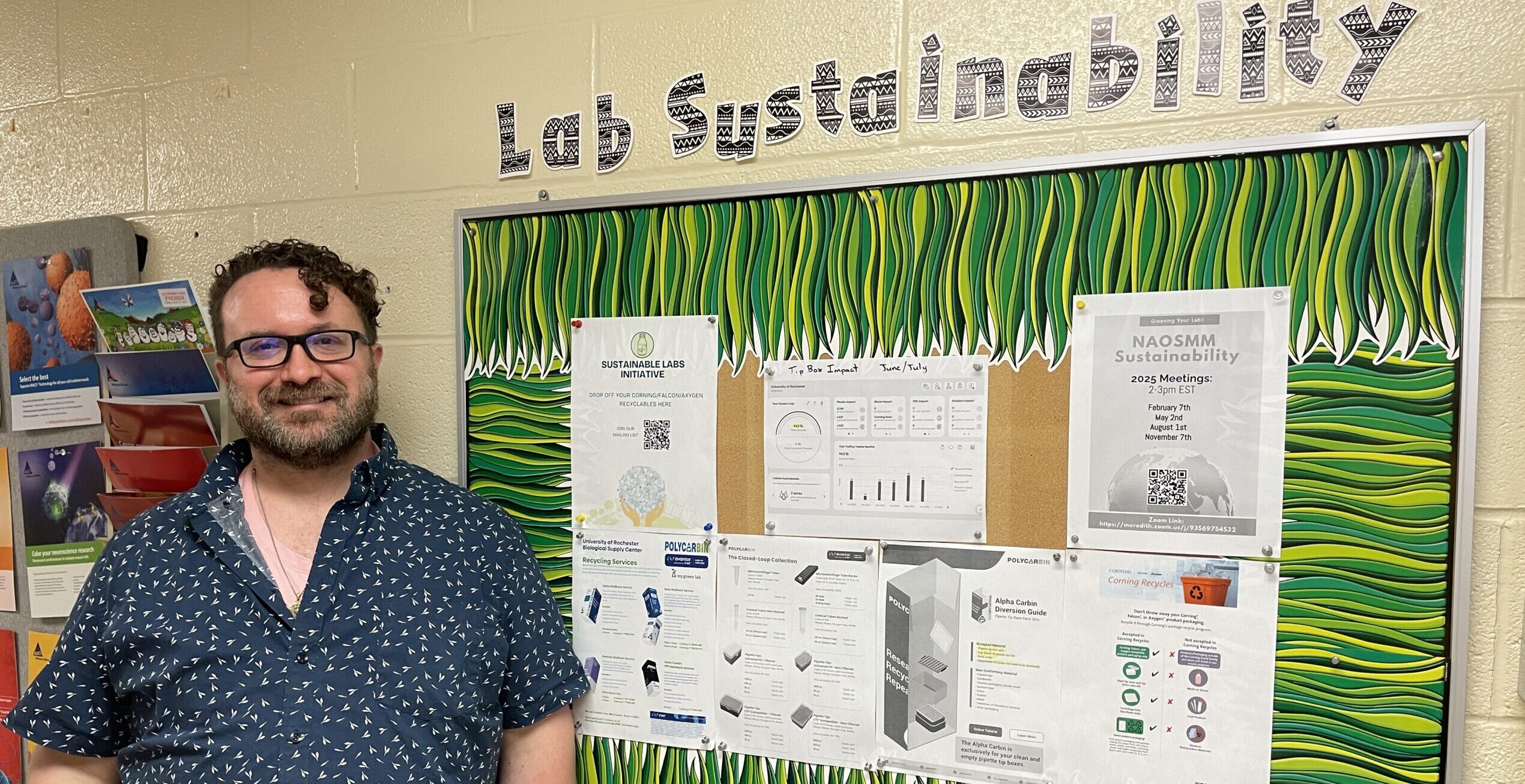Article originally posted on the URMC intranet (login required)
You may have seen the EV charging stations pop up in the parking garage or the energy-efficient temperature controls in newer Medical Center buildings.
But many of the environmentally friendly accomplishments at the Medical Center might not be so obvious. Yet together, these efforts have us ahead of many similar institutions across the country.
Consider the 2023 Sustainability Benchmark Data for Healthcare report, released by Practice Greenhealth. The group, a leading membership and networking organization for sustainable health care, publishes the report to guide health institutions in sustainability.
Nearly 200 hospitals documented their practices in the report, said Mark Schwartz CHFM, CHC, executive director of URMC Facilities Operations. “We have implemented a majority of these sustainability practices,” he explained, “with some items having been implemented over 25 years ago.”
Even a partial list shows the wide scope of our efforts:
- We recycle hundreds of tons of cardboard and other recyclable materials annually.
- We have treated our medical waste “on-site” since 1998 and will restart the practice once the new emergency room tower is complete.
- We use reusable sharp containers, saving tens of thousands of pounds of plastics each year.
- We minimize and then environmentally manage our pharmaceutical wastes leaving the facility.
- We have green cleaning programs in many areas of the Medical Center, including low-maintenance, “no-wax” flooring to eliminate harmful VOC gases and the need for chemical surface treatments.
- We eliminated ozone-producing equipment more than 20 years ago.
- We stopped the use of mercury-filled devices and other hazardous materials.
- We reduced kitchen waste and incorporated compostable products while adding in locally grown and produced food products—including organic options.
- We implement green initiatives in the ORs to reduce the amount of regulated medical waste being generated, and we’ve piloted the use of third-party, FDA-approved instrument reprocessing.
- We manage our own Energy Management Group, using rebate incentives for LED lighting, setback schedules, and improvements to lighting controls.
- We incorporated water-conservation technologies to minimize building water use.
“While our programs at the Medical Center can always be improved, we have already accomplished much more than most people realize,” said Schwartz.
According to Amy Kadrie, UR Sustainability senior manager, we’re taking advantage of funding opportunities through the New York State Energy Research and Development Authority (NYSERDA) to optimize our buildings and to do “retro commissioning.”
The goal is to reduce wasted energy usage and improve occupants’ comfort. So there’s a sustainability payoff while also improving our work environments.
These building improvements include updating and/or reprograming controls and implementing climate schedules to make the buildings operate more efficiently.
Among these more efficient buildings are:
- Golisano Children’s Hospital
- Ambulatory Care Facility
- Wilmot Cancer Center
- Kornberg Medical Research Building
- Del Monte Institute
- Helen Wood Hall
Waste minimization, tree plantings, fleet management, and other initiatives are part of the efforts as well. With the current Strong expansion project, most of the waste—including hundreds of tons of metal, concrete, and landfill scrap generated by demolition and construction—has been recycled and reused.”
The University also maintains a webpage to help employees connect with ways to support sustainable practices at work. The page includes information about the Green Reps program, a university-wide effort that includes employees from the Medical Center. Green Reps serve as advocates, liaisons, and educators to further our sustainability work.
Meanwhile, the work continues. One of the latest ideas to minimize waste is a pilot project on medical gloves, to reduce the amount sent to the landfill. If the pilot is successful, the next step would be to update our gloving policy.
New technologies continue to be piloted and evaluated to help our hospitals manage organic waste more sustainably. And in the future, URMC will continue to improve networks for reusing and recycling used medical equipment.
“There is still plenty to do in the near term,” Schwartz said. “But we are strongly engaged as an institution and working hard towards a more sustainable future.”




